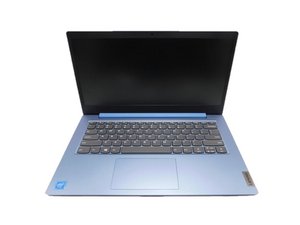Hi @pix88405
Try the following and check if you can get into the Windows Recovery Environment menus.
Turn on the laptop and when it starts to boot into Windows, press and hold the Power button to force stop the laptop.
Do this 3 times in a row i.e. Start → boot → force stop → start → boot → force stop → start etc.
On the 3rd attempt it should boot into the WRE menus if the recovery partition is OK that is.
If still no good, create an Windows USB Recovery drive and boot the laptop into the WRE that way. using it. The recovery USB drive can be created from any known working Win10/11 PC. You will need an 8GB USB flashdrive and about 40-60 minutes of time. To create the drive in the host PC go to Control panel → Recovery → Create a recovery drive and follow the prompts. Don't forget to change the boot order in the laptop to USB 1st boot option to boot from the drive.
@pix88405
My turn to be an idiot. (face palm)
I didn't double check the specifications of your model.
On p.3 it states "System has one M.2 SSD or one eMMC on systemboard exclusively"
Guess which option yours has?
If you guessed non removable eMMC storage on the motherboard -ding, ding, ding - you're a winner!
Can you still boot into into Windows OK at all?
If you can't, then the only other thing I can think of is to disconnect the main battery i.e. unplug it from the motherboard and then disconnect the coin cell battery -round black insulated object seen in the middle of the laptop in your images, and then press and hold the power button operated for 30 seconds and then release it.
This will reset the BIOS back to default settings so hopefully when you reconnect the coin cell battery and the main battery and then try to start it you can get into BIOS using one of the methods you already tried, to then change the boot order.
If you can, try getting into BIOS this way
Click on the Start menu and go to Settings. Once there, click on “Update”, and then select “Recovery.” Under “Advanced Startup”, select “Restart Now.” This will restart your computer and bring you to the BIOS menu.
The reason why Win 11 may not have worked well is that you have limited storage of only 64GB. Windows will use about 27GB-32GB but that is only for the OS not for any programs that may be installed with it. This could get you up near 45GB so not much space left for your personal data and other 3rd party programs you have installed.
You cannot install an M.2 SSD as there's no connector for it on the motherboard (that's the OR part of the specifications)
The best you can do with this type of motherboard arrangement is to insert the largest capacity micro SD card that you can afford (or want) and insert it in the card reader port on the left side of the laptop and leave it there and configure it as a 2nd storage drive for the laptop. i.e. make the C: drive (the eMMC storage) the primary drive for the OS and any programs that you install and on the SD card (you nominate the drive letter e.g. F drive,), you have all the personal data folders i.e. Documents, Pictures, Downloads, Videos etc so all your personal data is on the card. Search online for how to configure a2nd drive as a storage drive in Win10/11
The advantages are that you have increased the storage, your data is easily accessible if the laptop fails for any reason (simply remove the card and insert it in a card reader connected to a PC - recovering data is not easy to do on a failed laptop having eMMC storage - so do regular backups of your data if you don't like the idea. Also the card is unobtrusive and it doesn't protude from the case.
The downside is that it is so easily removable so subject to theft if you leave the laptop unattended in public places for a minute e.g. libraries etc but people would have to know it's there. I won't tell if you don't ;-)
Был ли этот ответ полезен?
Проголосовали
Отменить
Оценка
1
Отмена
Прокрутите эту тему, чтобы найти подходящее место для этого комментария. Затем нажмите «Прикрепить комментарий к этому сообщению», чтобы переместить его.



 1
1 
 384
384  1,5к
1,5к